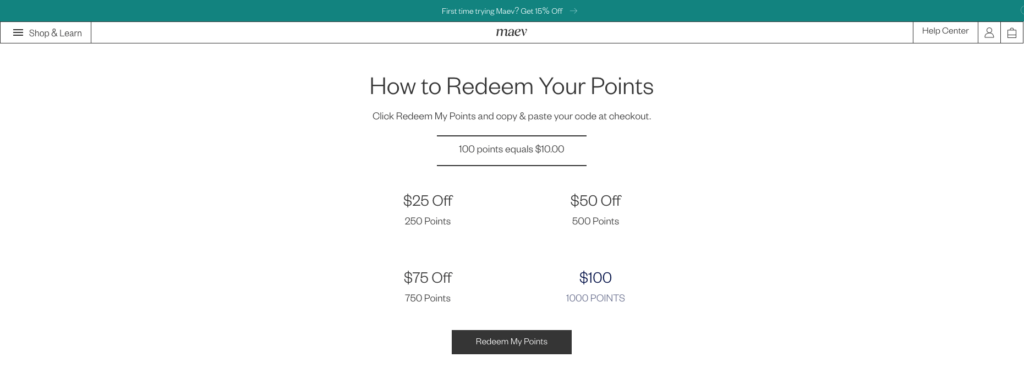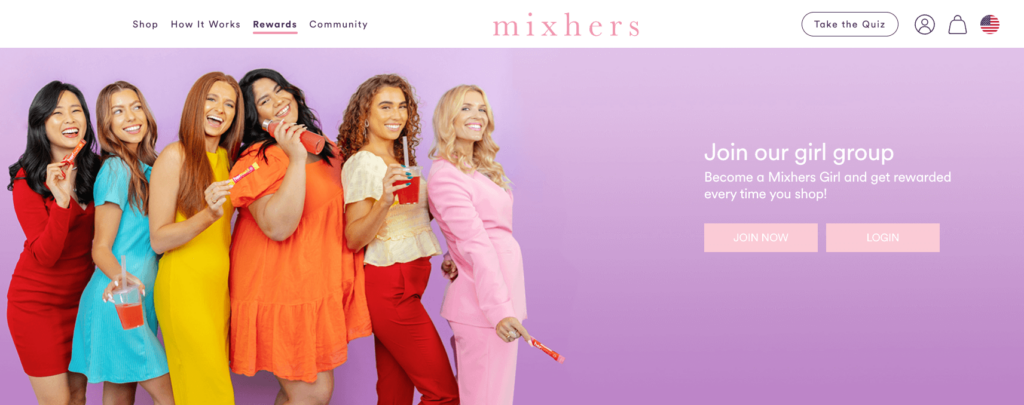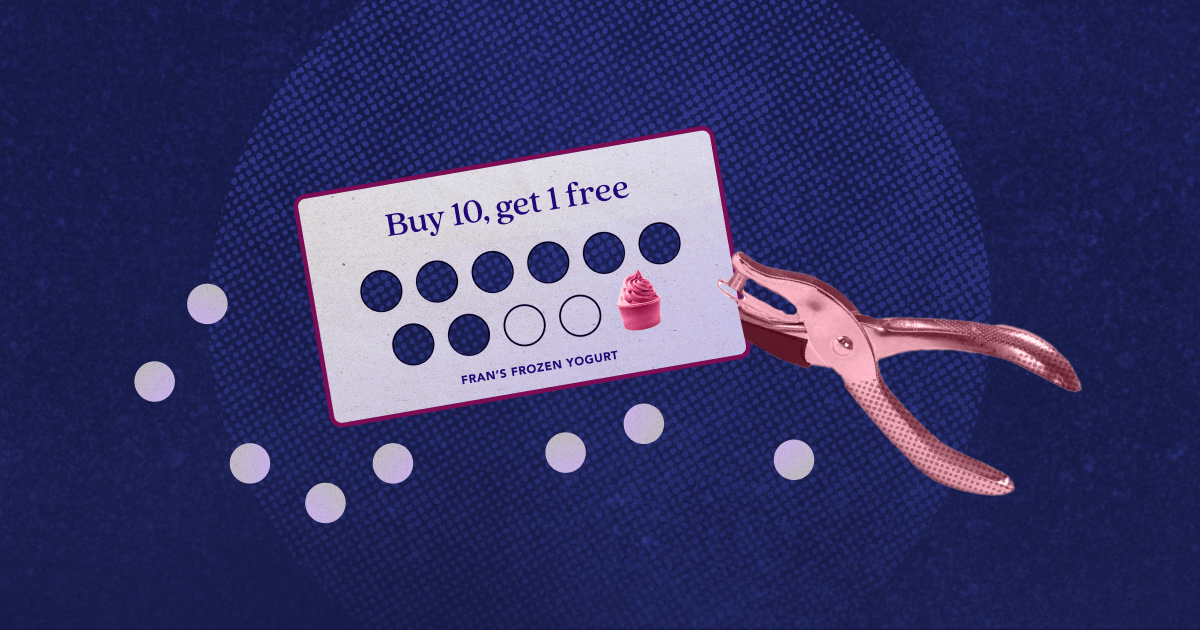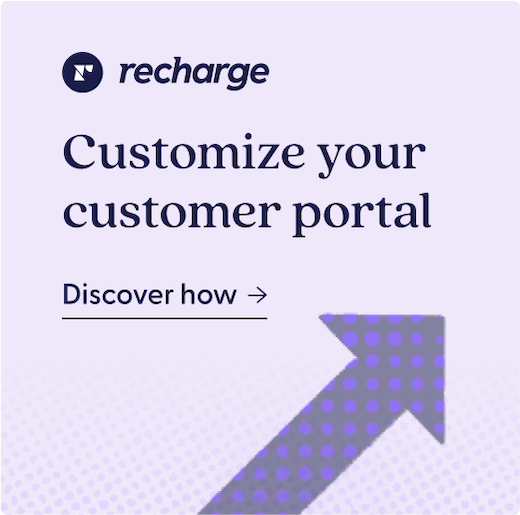With the shifts in the ecommerce landscape over the last several years, the importance of a solid retention strategy has increased significantly. Retention has historically always been complementary to offsetting customer acquisition costs (CAC), but with factors such as iOS security and third-party data availability changes, the cost to acquire a customer has gone up by as much as 60% in the last five years.
This is likely why the ability to earn rewards has gained popularity with DTC brands in recent years, and subscription businesses, in particular, have a unique advantage when it comes to implementing loyalty programs. Since subscribers’ purchases are recurring in nature, these businesses have built-in touchpoints to regularly connect with their customers, which can be leveraged through loyalty programs to boost value for both the business and existing customers.
Now that it’s clear why your online store should have a customer loyalty program, how do you get started? Continue reading for 8 steps to creating a successful loyalty program below.
Key takeaways
- Loyalty programs can help ecommerce businesses achieve their goals, including increasing customer lifetime value, encouraging repeat purchases, and incentivizing conversions.
- Defining the target audience is important in creating an effective loyalty program. Consider the personas you want to reach and the type of rewards that would appeal to them.
- To create a successful loyalty program, make it easy for customers to join and participate, communicate the value of the program, and choose the right rewards based on your business and target audience.
8 steps to creating the best loyalty programs for ecommerce businesses
1. Define the goals of your loyalty program
While it’s clear that retention is a major benefit of having a loyalty program, there are many other reasons businesses may want to consider a rewards program. Businesses should still be clear on their individual goals so they can remain laser-focused on their strategy and how customer loyalty programs can supplement key focus areas.
For example, customer loyalty programs can increase subscription conversions by enticing potential customers with loyalty rewards they can look forward to with future purchases. This loyalty program can differentiate brands that may offer similar products or services, which can be useful for startups looking to increase their customer base.
Similarly, loyalty programs can also increase customer lifetime value (LTV) by encouraging loyal customers to stick around longer or spend more money through a tiered system. This type of customer loyalty program may be more appealing to a business that already has a solid foundation of repeat customers but is looking to build customer loyalty to increase customer satisfaction and customer lifetime value (LTV).
2. Determine the target audience
After identifying the goals of your loyalty program, you’ll want to determine your target audience and the personas you hope to reach.
If the goal is acquisition, then your target audience is likely new customers, and the customer loyalty program is a way to incentivize conversion. On the other hand, if your primary focus is customer retention, then your target audience is likely existing customers that you want to encourage to make repeat purchases and build brand loyalty.
Looking at the personality of your target audience is important in determining the kind of reward to offer customers as well.
Points-based loyalty programs are especially effective for a younger target demographic, where reward points can be earned through things like referring friends, sharing on social media, or even milestones like birthdays.
On the other hand, a tiered loyalty program may be more appealing to a target audience that values exclusivity. These are especially lucrative for larger brands that benefit heavily from customer loyalty, such as beauty or skincare. With these kinds of brands, customers find a product that works for their specific needs and stick with it over a long period of time. Having a loyalty program in this vertical can be highly beneficial in building customer loyalty among regular customers.
Lastly, a cause-based loyalty program can be appealing to Gen Zers, who are known to invest in businesses that support causes they believe in. This demographic is more likely to be built-in brand advocates that bring in other customers through word of mouth or referral programs when they have a highly positive customer experience.
3. Choose the right perks to reward customer loyalty
There are various types of rewards that can be offered through a loyalty program, and choosing what kind to offer your loyal customers boils down to what makes sense for your target audience, your areas of focus, and your business.
A good example of this is Maev, a raw dog food company that offers loyalty club members points that can be redeemed in a future purchase as credit. Point-based loyalty programs such as these, where the reward is a discount or credit, make sense for this kind of business, where the target audience is coming specifically to purchase a particular product.

This type of customer is less likely to be intrigued by the offer of loyalty points that are exchanged for a complimentary gift—like a dog toy—than receiving cash off of repeat purchases since they are purchasing with a specific intention in mind.
Rewarding customers effectively is all about offering exclusive perks and discounts to increase participation and engagement in your loyalty program, which starts by understanding your target customers’ values.
This is also common with credit card companies that offer better reward points for their travel credit card offerings. They know that the customer who opts for a travel card is looking for rewards that specifically match their globetrotter lifestyle, so other perks like cashback may not be as much of a priority to offer.
4. Make it easy to join & participate in your customer loyalty program
If your customer loyalty program is not easily accessible to your customers, then all the work you’ve put into designing it won’t lead to the results you desire. It’s important that new customers can easily learn about the program, how to join it, and how to manage their reward points. This will keep them engaged and contribute to a positive customer experience.
Just as brands should make their products easy to purchase, customer loyalty programs should be just as accessible. Additionally, customer loyalty programs need to provide exceptional customer service. If something isn’t clear about the benefits of loyalty, how to use the loyalty program, or how to manage points and history, then access to customer support or a FAQ is crucial.

5. Communicate the value
Wherever you are making it known that your loyalty program exists you should have clear value propositions to motivate customers to join and convey the benefits of loyalty. By making your customers feel like there is real value in joining your loyalty program you are encouraging positive behaviour from the very beginning and providing customers with tangible benefits before they even join.

Customers want to know ahead of time that they get early access to exclusive events or product releases, or that they can earn points on their next purchase that they were already planning to make anyway. Meet customers where they are and make the value of joining your loyalty program clear at multiple touchpoints, such as:
- On a landing page
- In the customer portal
- On your social media channels
- Via email campaigns
6. Successful customer loyalty programs use customer data to personalize the experience
An effective rewards program is driven by customer data.
Tenzo Tea has done an excellent job of relying on data-driven practices to retain customers and build brand loyalty. Through the use of what they call “optimal binning,” they are able to segment their customers into cohorts based on their behaviour and identify what sort of behaviour their highest value customers engaged in. This allows their loyalty program to be more customer-centric and encourages customers to follow a specified path that, through analysis, has been shown to lead to higher LTV and AOV.
7. Track & measure success
A strong customer loyalty program not only relies on customer data to personalize the experience for its customers, but also on tracking and measuring its success. Tenzo Tea leverages a custom dashboard where they collect data on key metrics such as LTV and retention to pinpoint whether the implementation of a loyalty program has any measurable impact. Depending on the stage of the business, you can also focus on other metrics, like subscription conversions, to see if offering a loyalty program positively affects acquisition.
There are many benefits of customer loyalty programs, but unless your business actively tracks and measures the data, it’s difficult to evaluate whether your rewards program is offering a good return on investment.
8. Keep it fresh & relevant
You want to engage customers with loyalty programs by keeping it fresh and relevant over time, through regular updates and new rewards. This is key in customer engagement overall but also helps to build customer loyalty. When customers feel anticipation for the future of a brand, they are more likely to continue to spend money to invest in its future.
It’s also important to communicate these updates clearly to your customers so they know exactly how to take advantage of them and are motivated to take you up on any new offers. Rewards programs should avoid repeating the same gifts or discounts, so as not to bore the customers.
Increase retention & customer satisfaction with a loyalty program
Businesses that implement customer loyalty programs are able to encourage positive consumer behaviour to drive repeat business and reward customers for it. Generally speaking, it is cheaper to retain existing customers than to acquire new customers—though it’s important to identify what valuable customers look like and target the high-value ones with your customer loyalty program.
With clearly set goals and strong communication with your loyalty members, a strategically placed customer loyalty program may be just what your ecommerce business needs to scale to the next level.
Sources
[1] Customer Acquisition Cost (Recharge ecommerce glossary)
[2] Brands Losing a Record $29 for Each New Customer Acquired (News article)
[3] How to reach Gen Z with your DTC content (Recharge blog)
[4] The power of data & its role in increasing retention with Tenzo Tea (Recharge blog)
[5] What is Optimal Binning and how is it done? (Support article)
[6] The Value of Keeping the Right Customers (Marketing article)



